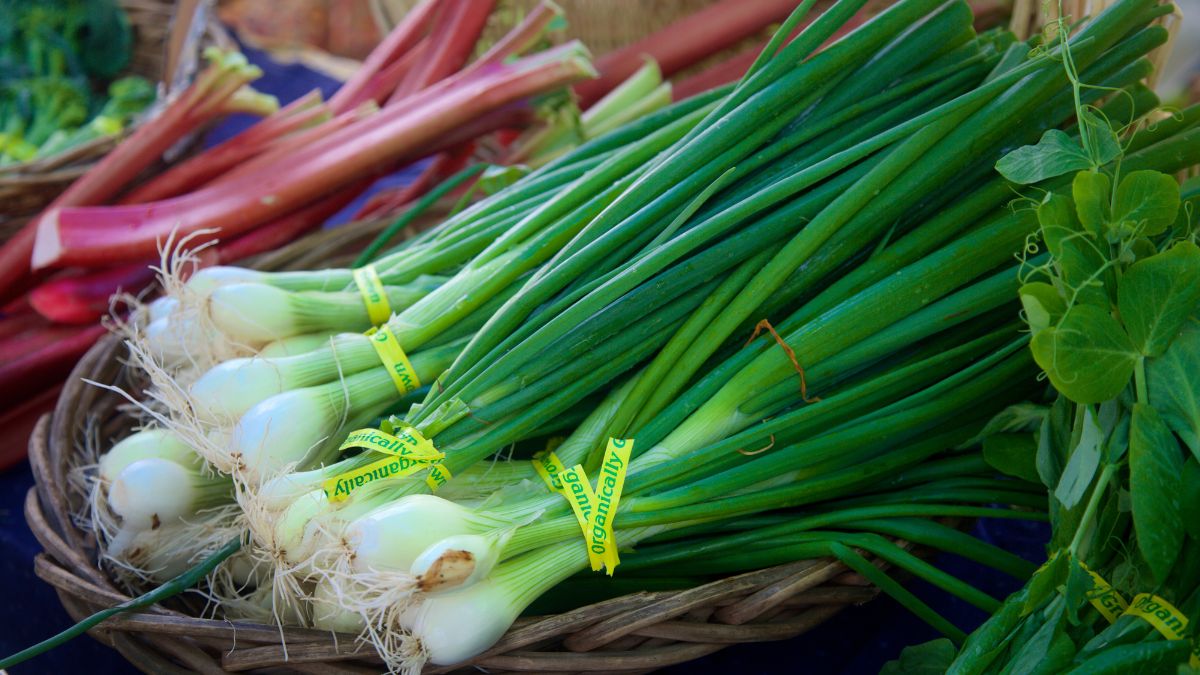Introduction
Bunching Onions
Bunching onions, also known as green onions or scallions, are versatile vegetables commonly used in various cuisines worldwide. They are characterized by their long, slender green stalks and white bulbs, which can be eaten raw or cooked to add flavour to dishes. Understanding the growth and culinary uses of bunching onions can help you appreciate their value in cooking and gardening.

Introduction
Bunching onions belong to the Allium genus and are closely related to garlic, leeks, and chives. Unlike traditional onions, bunching onions do not form large bulbs underground. Instead, they grow in clusters and can be harvested at any stage of growth. This makes them a convenient and sustainable option for home gardeners and commercial growers alike.
Cultivation
Bunching onions thrive in well-drained, fertile soil with a pH between 6.0 and 7.0. They require full sun but can tolerate partial shade. These onions are best grown from seed, which should be sown directly into the ground in early spring or late summer. Regular watering and occasional fertilization are essential for optimal growth.
Propagation
Propagation of bunching onion is typically done by dividing the clumps of bulbs and replanting them in new locations. This can be done in early spring or late summer when the plants are dormant. Division should be done carefully to ensure each bulb has enough roots to support its growth.
Harvesting
Bunching onion can be harvested at any stage of growth, depending on your preference. For green onions, harvest when the stalks are about 6-8 inches tall. For more mature onions, wait until the stalks are around 12-14 inches tall. Use a sharp knife to cut the onions at ground level, taking care not to damage the bulbs.
Culinary Uses
Bunching onions are prized for their mild, onion-like flavour and crisp texture. They can be used raw in salads, salsas, and garnishes, or cooked in stir-fries, soups, and omelettes. The green tops can be used as a substitute for chives in many recipes. Bunching onions are also commonly used in pickling and canning.
Nutritional Value
Bunching onions are low in calories but high in vitamins and minerals. They are a good source of vitamin C, vitamin K, and folate, as well as antioxidants and fibre. Including bunching onion in your diet can help boost your immune system, improve digestion, and reduce the risk of chronic diseases.
Varieties
Several varieties of bunching onions are available, each with a unique flavour and appearance. Some popular varieties include Evergreen, Ishikura, and White Lisbon. These varieties differ in bulb size, stalk length, and flavour intensity, allowing you to choose the best option for your culinary needs.
Storage
Bunching onion can be stored in the refrigerator for up to two weeks. To prolong their freshness, trim the roots and place the onions in a plastic bag in the crisper drawer. You can freeze chopped bunching onions later, although they may lose some crispness.
Pests and Diseases
Bunching onions are relatively pest and disease-resistant, but they can still be affected by common onion pests such as thrips and onion maggots. To prevent infestations, practice crop rotation and keep the garden clean and free of debris. If pests do become a problem, organic insecticides and natural predators can be used to control them.

Conclusion
Bunching onions are versatile and nutritious vegetables that can add flavour and freshness to a wide range of dishes. Whether you grow them in your garden or purchase them from the store, understanding their growth and culinary uses can help you make the most of this humble yet flavorful vegetable.
FAQs
Can I regrow bunching onion from scraps?
- You can regrow bunching onion from scraps by placing the root end in water and allowing new roots to grow.
How do I know when bunching onions are ready to harvest?
- Bunching onions can be harvested at any stage of growth, but they are typically ready when the tops are green and firm.
Can I freeze bunching onion for later use?
- Yes, you can freeze chopped bunching onion for later use, although they may lose some of their crispness.
Are bunching onions the same as spring onions?
- Bunching onions resemble spring onions but do not form large bulbs underground like traditional onions.
Can I use the white part of bunching onion when cooking?
- Yes, the white part of the bunching onion is edible and can be used in cooking, just like the green tops.
